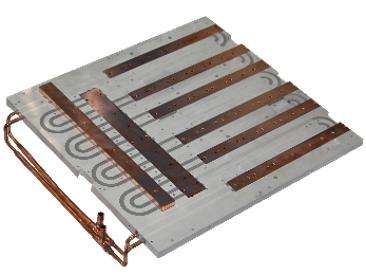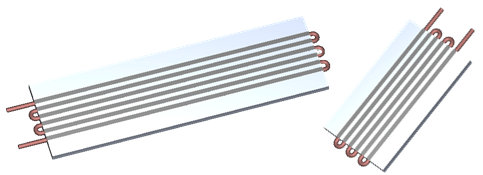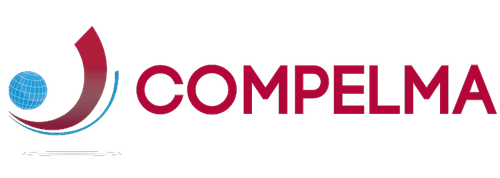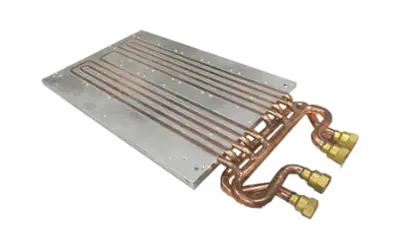As an engineer involved in electronic or industrial projects, you are undoubtedly aware that thermal management can be a significant challenge. In some cases, air cooling methods are insufficient to effectively dissipate the heat generated by a component or system. Consequently, custom cold plates become an essential tool. These devices use a cooling fluid to absorb heat from a component and dissipate it efficiently. For complex and specific needs, standard solutions quickly reach their limits. Therefore, custom cold plate fabrication becomes essential to meet the most demanding project requirements. Interested in learning more? Follow the guide! We provide more details in our article.
Cold Plates: The Thermal Dissipation Advantage
A cold plate is an advanced cooling device essential for the thermal management of electronic and industrial systems.
It typically consists of a metal plate, often made of aluminum or copper, with internal channels or tubes that allow the circulation of a cooling fluid. Its role is to absorb heat directly from high-temperature components (processors, batteries, power converters, etc.) and dissipate it efficiently.
Cold plates are necessary when traditional air-cooling methods (fans or heat sinks) are no longer sufficient to manage high thermal loads. The liquid cooling provided by these plates enables more efficient and faster heat dissipation, particularly in environments where heat density is increasing.
 Cold Plate Fabrication: 3 Standard Options and 1 Custom Option
Cold Plate Fabrication: 3 Standard Options and 1 Custom Option
There are three main methods for fabricating cold plates:
- Laminated copper tubes;
- Drilling through a metal plate;
- Aluminum welding and Friction Stir Welding (FSW).
For the most demanding projects, custom cold plate fabrication is sometimes required. Let’s explore these methods in more detail.
1. Laminated Copper Tubes
Laminated copper tubes represent one of the most common methods of fabricating cold plates, thanks to copper’s excellent heat transfer properties. This material is ideal for effective component cooling.
Laminated copper tubes are suitable for applications requiring high thermal precision, such as:
- Advanced medical equipment;
- High-end electronic components;
- Demanding industrial systems.
This technique uses laminated copper sheets to create channels within the cold plate to facilitate the cooling fluid circulation. The fluid then flows through these passages, absorbing heat from the components in contact with the plate.
2. Drilling Through a Metal Plate
Drilling through a metal plate (mainly aluminum) is another method of cold plate fabrication. A solid metal plate is carefully drilled to create a network of internal channels for the cooling fluid to circulate.
This solution is generally economical, as only machining costs are involved without the need for tooling expenses. It is ideal for projects with restricted budgets. However, it comes with certain limitations:
- The initial low cost may increase with the need for plugs to seal each opening after drilling.
- “Dead zones” at the channel ends can form, compromising the cooling system’s long-term efficiency.
3. Friction Stir Welding (FSW)
Friction Stir Welding (FSW) is an innovative process that joins aluminum parts without using external filler material.
This method of cold plate fabrication offers several advantages:
- Reduced production costs;
- High strength and perfect sealing, even in the case of thermal shocks. Therefore, it is a preferred option for cold plates intended for demanding environments.
However, FSW imposes certain restrictions on the dimensions of the plates that can be fabricated, which should not exceed 1,500mm by 1,000mm with a maximum thickness of 20mm.
Custom Cold Plate Fabrication
Some projects may have specific requirements that go beyond the capabilities of standard cold plate fabrication methods. As previously explained, while these techniques offer advantages for a wide range of applications, they may encounter limits when faced with particularly complex projects.
In these cases, opting for custom cold plate fabrication might be the key. This approach allows for cooling solutions that perfectly adapt to the physical and thermal constraints of the projects. Customization can include:
- Specific shapes;
- Non-standard dimensions;
- Specific thermal properties to ensure maximum cooling system efficiency.

Advantages of Custom Cold Plate Fabrication
Choosing to work with custom cold plates presents several significant benefits:
- Perfect adaptation to project requirements;
- Optimization of thermal management;
- Material flexibility (according to thermal properties needed, corrosion resistance, weight, etc.);
- Integration of complex functionalities (optimized flow channels, targeted cooling zones, specific mounting systems, etc.);
- High performance even in extreme conditions;
- Reduced risk of overheating;
- Better integration into available space.
Compelma: Your Partner for Custom Cold Plate Production
At Compelma, all our plates are custom-made according to your plans and requirements. Our fabrication process always begins with creating a prototype before mass production, allowing you to validate our concept and make necessary adjustments.
Given that each project is unique, we also take the time to:
- Advise you on best practices for cold plate fabrication;
- Provide feasibility studies;
- Supply thermal studies (upon request).
Choose an optimal cooling solution. With custom cold plate fabrication, you will improve the overall performance of your final product and make it more competitive in the market.
Contact our technical team to discuss your needs!

